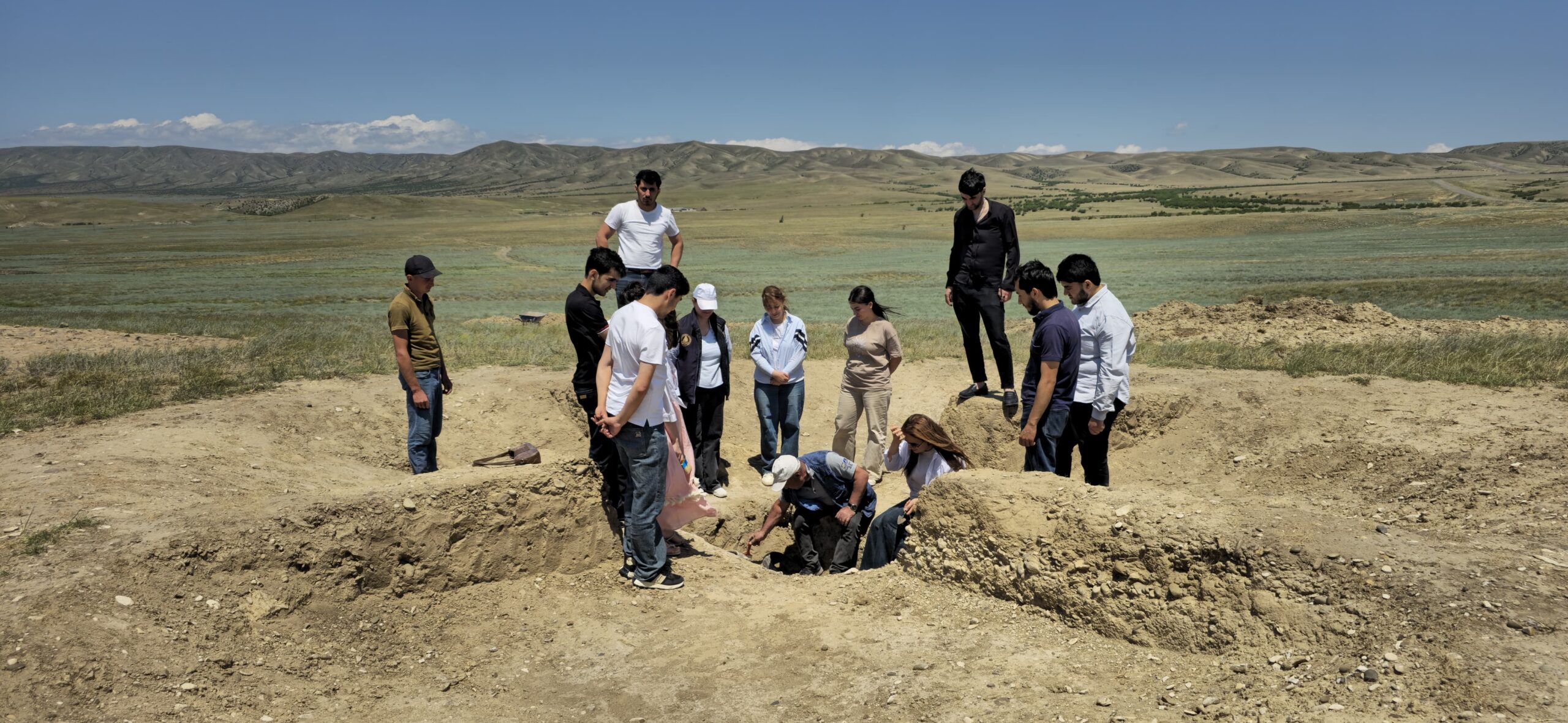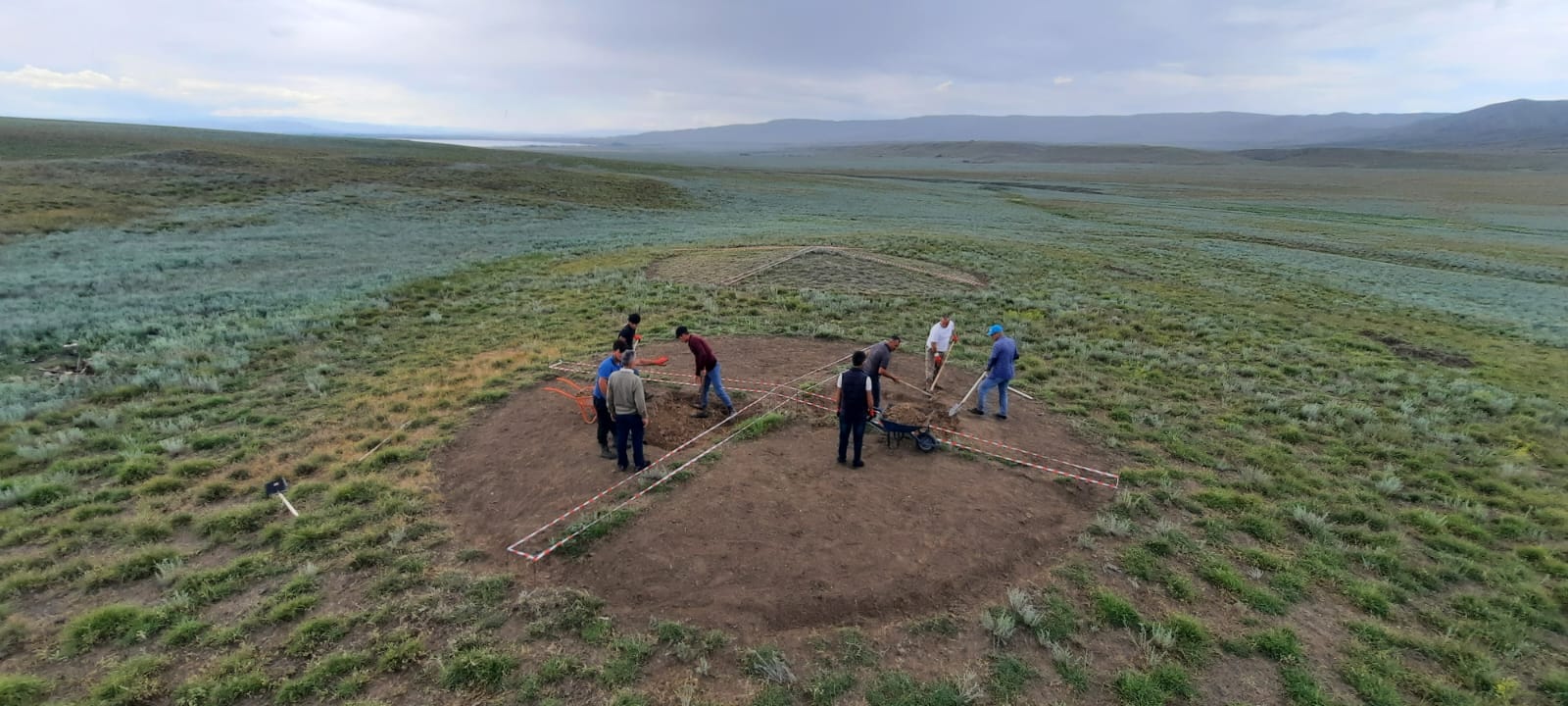Name: Yovshanlidere Kurgans
Location: Jeyranchol, Keshikchidagh Kurgan Valley
Date of Discovery: Winter of 2024
Period: Late Bronze–Early Iron Age (Khojaly-Gadabay Culture)
The Yovshanlidere area represents a long and narrow depression stretching from Sariyokhush to Aghgol within the Jeyranchol region. The name of this area derives from the local pastoral population, who referred to this narrow strip of land—where the wormwood plant (Artemisia) grows abundantly—as “Yovshanlidere” (Wormwood Valley). The kurgan graves in Yovshanlidara are situated either in close proximity to one another or at certain distances apart.
The Yovshanlidere kurgans were discovered during archaeological investigations conducted under the project titled “Scientific-Archaeological Excavations and Summer School 5 in Keshikchidagh.” The excavations at the Yovshanlidere kurgans were carried out under the supervision of Dr. Shamil Najafov, PhD in History and Associate Professor, a leading researcher at the Institute of Archaeology and Anthropology of ANAS.
The diameters of the kurgans are 16, 18, and 22 meters, with heights ranging from 1 to 2.5 meters above the present ground level. Kurgan No. 3 has an earthen covering, while the other two were constructed from a mixture of gravel and soil. The sub-kurgan central burial chamber of Kurgan No. 3 is simply constructed. Pottery vessels were systematically discovered around the human skeleton within the burial chamber. Although Kurgan No. 4 exhibits a different structural design, similar burial customs and contemporary archaeological grave goods were identified. Both kurgans date back to the Late Bronze–Early Iron Age (second half of the 2nd millennium BCE to the beginning of the 1st millennium BCE) and contain typical archaeological materials of the Khojaly-Gadabay culture.
Kurgan No. 7 is located to the south of the previous two, situated on a high hill. It was constructed with soil mixed with gravel; however, the burial chamber was covered with large, slab-like mountain stones. The burial chamber, discovered at a depth of 1.5 meters, extends 6 meters in the north-south direction, with an approximate depth of 1 meter. This chamber revealed a remarkable burial: along with the human skeleton, bones of small ruminants and a boar, a horse skull, numerous ceramic vessels, and a bronze socketed spearhead were uncovered. The chamber, nearly 6 meters long, and the rich assemblage of grave goods suggest that this burial belonged to a person of high status. Almost all the ceramic vessels were decorated with inlay (incrustation). The burial characteristics and grave goods indicate that this kurgan was constructed earlier, during the Middle Bronze Age (first half of the 2nd millennium BCE). The excavation of Kurgan No. 7 and the discoveries made suggest that burial practices in the area had already commenced in the Middle Bronze Age. This finding allows researchers to reconsider the chronological framework of kurgans in the Keshikchidagh Reserve area, potentially extending it to earlier periods than previously identified Late Bronze Age sites.Based on expert evaluations, the recovered material and cultural artifacts — including a circular limestone seal, a bronze spearhead, a bronze bracelet, inlaid ceramic vessels, fragments of obsidian, animal bones interpreted as provisions for the afterlife, and clay spindle whorls — allow these kurgans to be attributed to the Middle Bronze Age.





